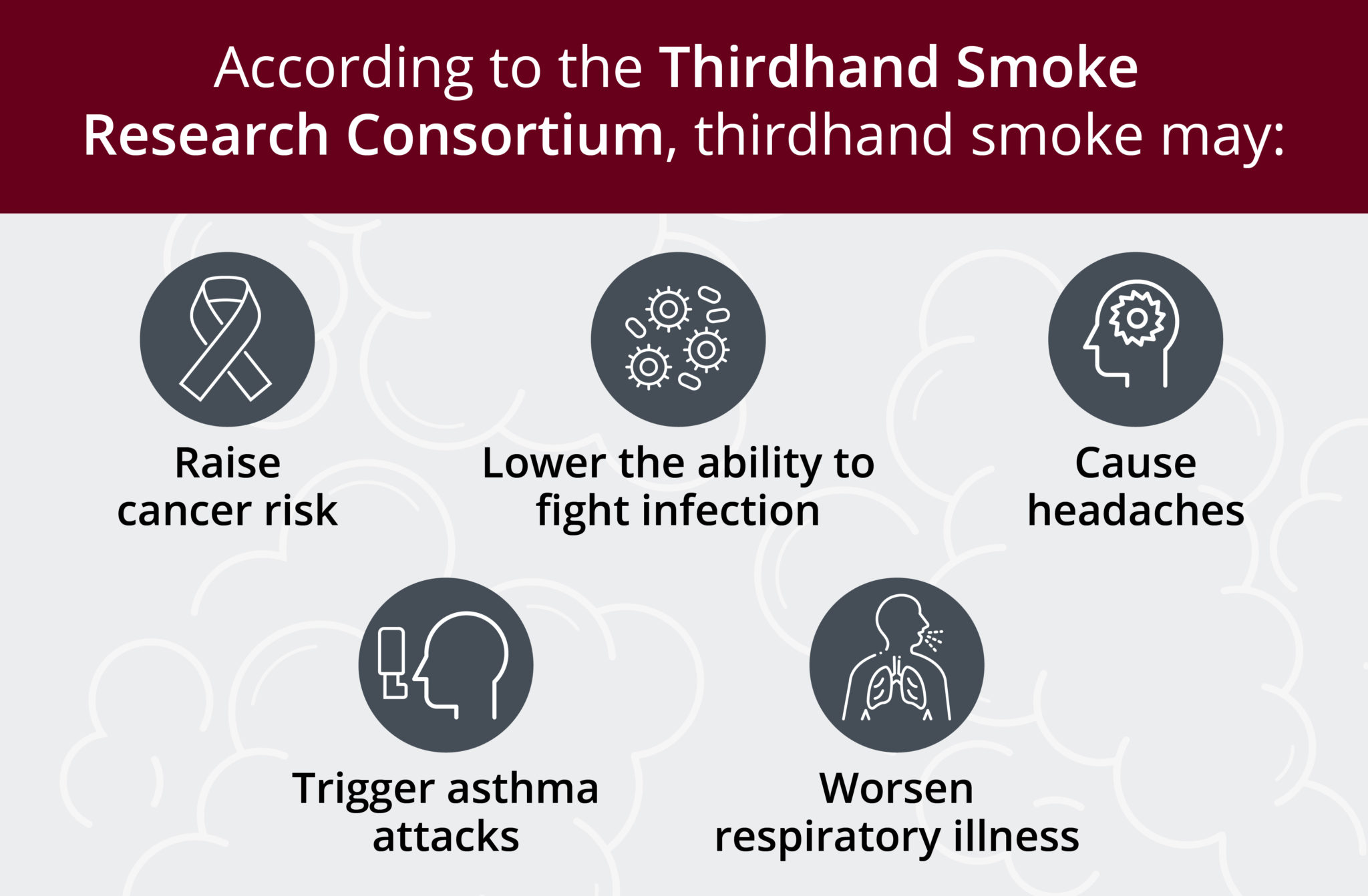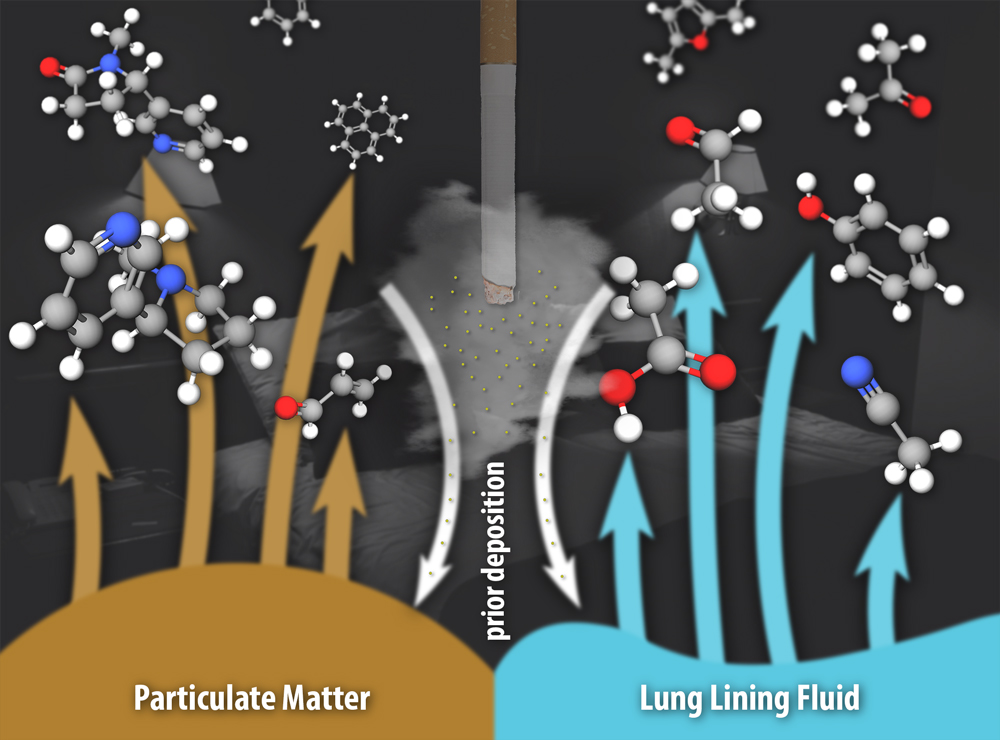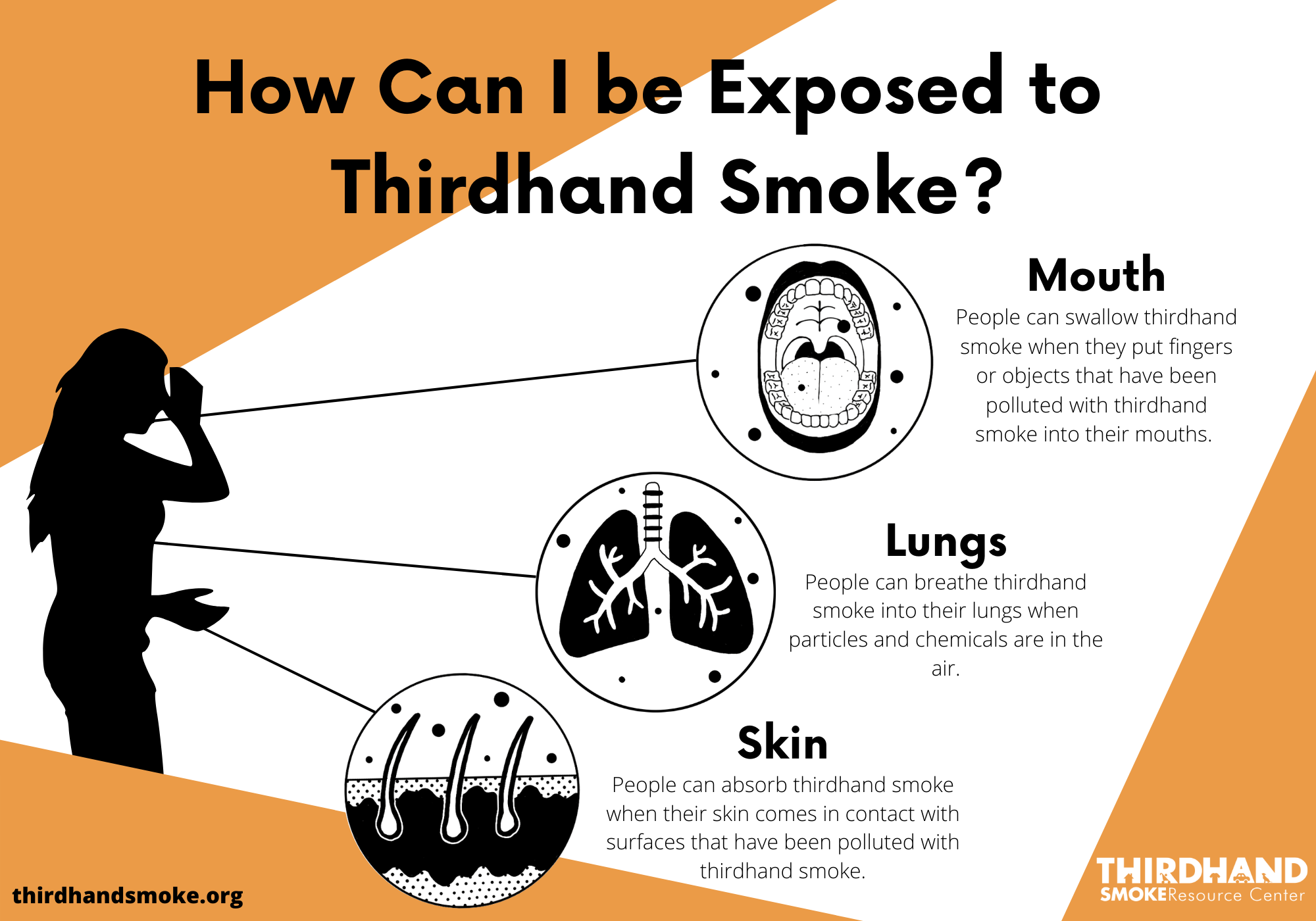Third hand smoke is a term used to describe the residual toxins and chemicals left behind by tobacco smoke. This can include the particles and gases that cling to surfaces such as furniture, carpets, and walls, as well as the smoke that lingers in the air long after a cigarette has been extinguished. While many people are aware of the dangers of second hand smoke, third hand smoke is a lesser known but equally harmful threat to our health. Third hand smoke is a term that was coined in 2009 by researchers from the University of California, San Francisco. They found that the toxins from cigarette smoke can remain on surfaces for days, weeks, or even months, and can continue to release harmful chemicals into the air. This is particularly concerning for households with children or non-smokers, who can be exposed to these toxins without even realizing it.Third Hand Smoke: What Is It and What Are the Risks?
If you or someone in your household smokes, it's important to take steps to reduce the presence of third hand smoke in your home. The first and most obvious solution is to quit smoking, or at least refrain from smoking indoors. However, even if you don't smoke, you may still have third hand smoke in your home if you live in an apartment building, or if previous tenants were smokers. To get rid of third hand smoke, you can start by cleaning and disinfecting all surfaces in your home. This includes wiping down walls, furniture, and other surfaces with a mixture of vinegar and water. You can also use specialized cleaners designed to remove smoke residue. It's also important to regularly wash any fabrics in your home, including curtains, linens, and upholstery.How to Get Rid of Third Hand Smoke in Your Home
While the presence of third hand smoke may not be immediately obvious, it can have serious health consequences. The toxins and chemicals left behind by tobacco smoke can continue to be released into the air, where they can be inhaled or ingested by household members. This can increase the risk of respiratory problems, allergies, and even cancer. In addition, third hand smoke can also pose a risk to pets, who may lick or ingest the toxins left on surfaces. Studies have shown that pets living in homes with smokers have higher levels of nicotine and other harmful chemicals in their bodies.Third Hand Smoke: What You Need to Know
The best way to protect your family from third hand smoke is to prevent it from entering your home in the first place. If you or someone in your household smokes, make sure to do so outside and away from your home. You can also ask guests who smoke to do the same. If you live in an apartment building, make sure to take measures to prevent smoke from entering your unit. This can include sealing any cracks or gaps where smoke can seep through, and talking to your landlord about creating a smoke-free environment for all tenants.How to Protect Your Family from Third Hand Smoke
Many people may not realize that their living room can be a breeding ground for third hand smoke. This is because it's a common area for smoking, and the toxins from cigarettes can easily cling to surfaces and linger in the air. In addition, the living room is often where children and pets spend a lot of their time, putting them at risk for exposure to these harmful chemicals. It's important to regularly clean and disinfect your living room, and to take steps to reduce the presence of third hand smoke. This can include using air purifiers, opening windows for ventilation, and avoiding smoking indoors altogether.Third Hand Smoke: A Hidden Danger in Your Living Room
Third hand smoke can have a range of negative effects on our health, especially for those who are more vulnerable such as children and pets. In addition to increasing the risk of respiratory problems and allergies, third hand smoke has also been linked to developmental issues in children, as well as an increased risk of Sudden Infant Death Syndrome (SIDS). Furthermore, the toxins from third hand smoke can also damage furniture and other surfaces, causing them to deteriorate more quickly and potentially leading to costly replacements.The Dangers of Third Hand Smoke in Your Home
Keeping your living room clean and free from third hand smoke is crucial for the health and well-being of your family. In addition to regular cleaning, there are a few additional steps you can take to reduce the presence of third hand smoke in your home. You can use baking soda to absorb odors from furniture and carpets, and use a mixture of water and white vinegar to clean hard surfaces. It's also a good idea to regularly air out your living room by opening windows and using fans to circulate fresh air.How to Clean Your Living Room from Third Hand Smoke
In addition to taking steps to keep your home free from third hand smoke, there are also measures you can take to reduce your overall exposure to these harmful toxins. One of the most effective ways is to avoid places where smoking is allowed, such as bars and restaurants. You can also advocate for smoke-free policies in public places and work towards creating a healthier environment for everyone.Third Hand Smoke: What You Can Do to Reduce Exposure
Children are especially vulnerable to the effects of third hand smoke, as their bodies are still developing and they spend a lot of time on surfaces that may be contaminated with these toxins. In addition to respiratory problems, children who are exposed to third hand smoke may also experience behavioral issues and learning difficulties. It's important for parents to be aware of the dangers of third hand smoke and take steps to protect their children from exposure. This can include avoiding smoking indoors, keeping a clean living environment, and advocating for smoke-free policies in public places.The Effects of Third Hand Smoke on Children
If you're unsure if your living room has been contaminated with third hand smoke, you can purchase testing kits to measure the levels of nicotine and other harmful chemicals in your home. These kits are easy to use and can give you a better understanding of the potential risks to your health and the health of your family. If you do find high levels of third hand smoke in your living room, it's important to take immediate steps to reduce exposure and keep your home clean and smoke-free.How to Test for Third Hand Smoke in Your Living Room
The Impact of Third Hand Smoke in Your Living Room

What is Third Hand Smoke?
 Third hand smoke refers to the residual chemicals and particles from tobacco smoke that linger on surfaces and in the air even after a cigarette has been extinguished. This means that even if you don't smoke in your living room, if you live in a household with a smoker, you and your family could still be exposed to harmful chemicals from third hand smoke.
Third hand smoke refers to the residual chemicals and particles from tobacco smoke that linger on surfaces and in the air even after a cigarette has been extinguished. This means that even if you don't smoke in your living room, if you live in a household with a smoker, you and your family could still be exposed to harmful chemicals from third hand smoke.
The Dangers of Third Hand Smoke
 According to the Centers for Disease Control and Prevention, third hand smoke contains over 250 toxic chemicals, including lead, arsenic, and cyanide. These chemicals can cling to surfaces such as carpets, furniture, and walls, and can remain there for months. When these surfaces are touched or disturbed, the particles can become airborne and be inhaled by anyone in the vicinity. This poses a significant health risk, especially for children and non-smokers who may have weaker immune systems.
According to the Centers for Disease Control and Prevention, third hand smoke contains over 250 toxic chemicals, including lead, arsenic, and cyanide. These chemicals can cling to surfaces such as carpets, furniture, and walls, and can remain there for months. When these surfaces are touched or disturbed, the particles can become airborne and be inhaled by anyone in the vicinity. This poses a significant health risk, especially for children and non-smokers who may have weaker immune systems.
The Impact on Your Living Room Design
 Not only can third hand smoke have serious health consequences, it can also affect the overall design and aesthetic of your living room. The lingering smell of smoke can be difficult to remove, causing your furniture and decor to absorb the odor and become discolored over time. This can make your living room feel dirty and uninviting, and may even decrease the value of your home.
Not only can third hand smoke have serious health consequences, it can also affect the overall design and aesthetic of your living room. The lingering smell of smoke can be difficult to remove, causing your furniture and decor to absorb the odor and become discolored over time. This can make your living room feel dirty and uninviting, and may even decrease the value of your home.
How to Protect Your Living Room
Designing a Smoke-Free Living Room
 If you are redesigning your living room, consider using materials and fabrics that are easy to clean and resistant to odors, such as leather or vinyl furniture and hardwood floors. You can also incorporate plants and air purifiers to help improve air quality and remove any lingering smoke particles.
If you are redesigning your living room, consider using materials and fabrics that are easy to clean and resistant to odors, such as leather or vinyl furniture and hardwood floors. You can also incorporate plants and air purifiers to help improve air quality and remove any lingering smoke particles.
The Bottom Line
 Third hand smoke is a serious concern for both your health and the design of your living room. By taking steps to reduce exposure to third hand smoke and designing a smoke-free living room, you can create a healthier and more inviting space for you and your family to enjoy. Remember, prevention is key when it comes to protecting your living room from the harmful effects of third hand smoke.
Third hand smoke is a serious concern for both your health and the design of your living room. By taking steps to reduce exposure to third hand smoke and designing a smoke-free living room, you can create a healthier and more inviting space for you and your family to enjoy. Remember, prevention is key when it comes to protecting your living room from the harmful effects of third hand smoke.














































:max_bytes(150000):strip_icc()/living-room-area-rugs-1977221-e10e92b074244eb38400fecb3a77516c.png)







